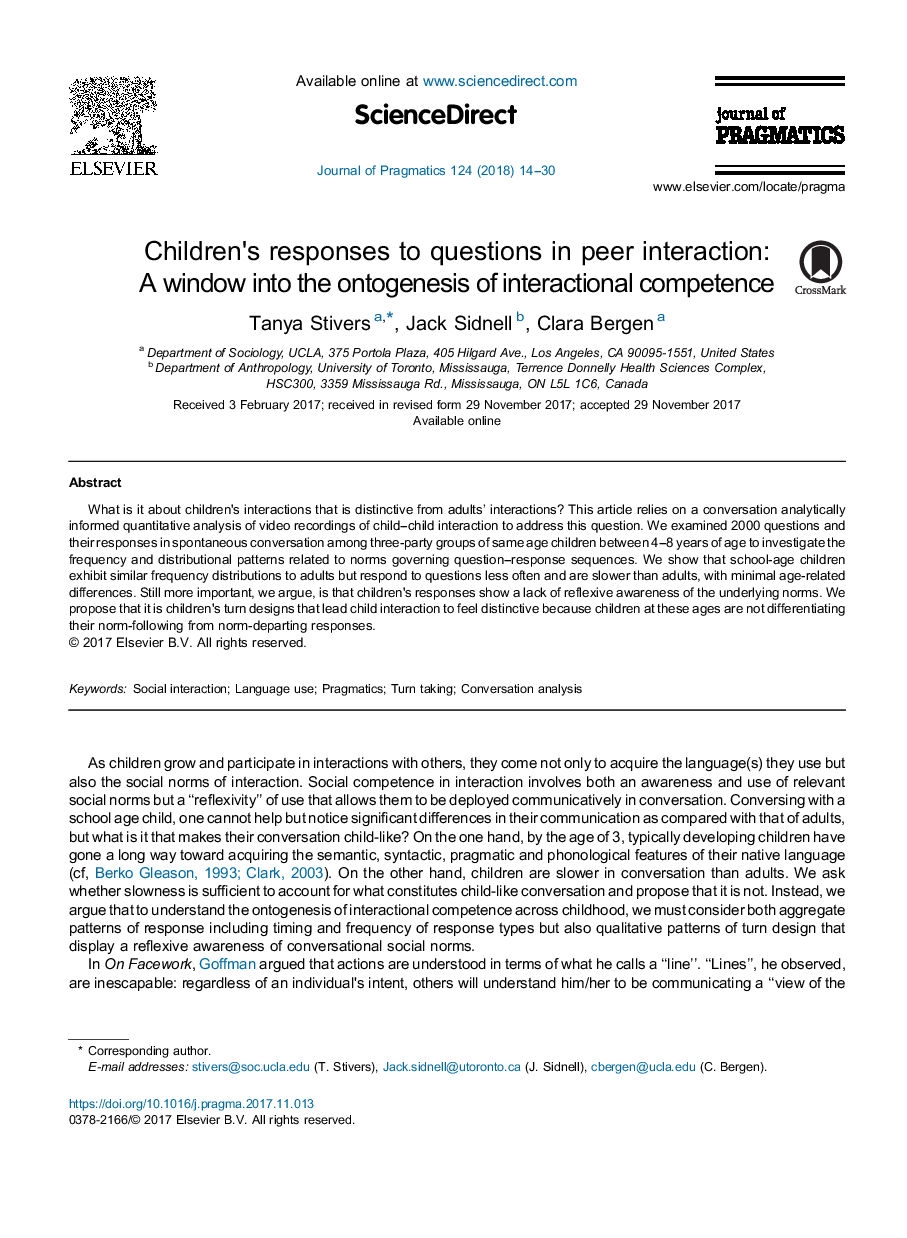| Article ID | Journal | Published Year | Pages | File Type |
|---|---|---|---|---|
| 7297589 | Journal of Pragmatics | 2018 | 17 Pages |
Abstract
What is it about children's interactions that is distinctive from adults' interactions? This article relies on a conversation analytically informed quantitative analysis of video recordings of child-child interaction to address this question. We examined 2000 questions and their responses in spontaneous conversation among three-party groups of same age children between 4-8 years of age to investigate the frequency and distributional patterns related to norms governing question-response sequences. We show that school-age children exhibit similar frequency distributions to adults but respond to questions less often and are slower than adults, with minimal age-related differences. Still more important, we argue, is that children's responses show a lack of reflexive awareness of the underlying norms. We propose that it is children's turn designs that lead child interaction to feel distinctive because children at these ages are not differentiating their norm-following from norm-departing responses.
Related Topics
Social Sciences and Humanities
Arts and Humanities
Language and Linguistics
Authors
Tanya Stivers, Jack Sidnell, Clara Bergen,
